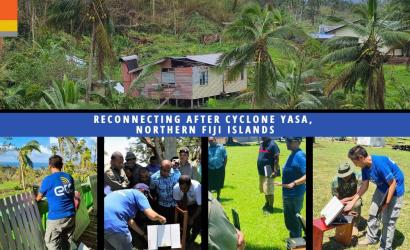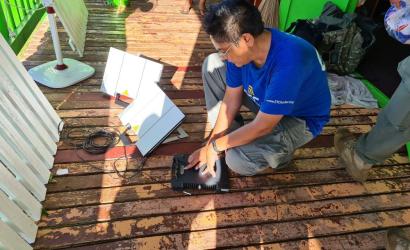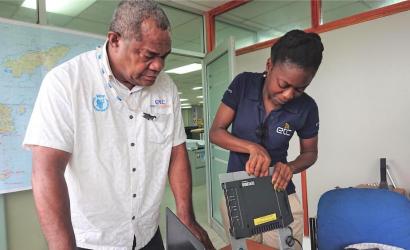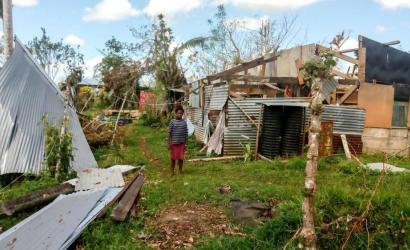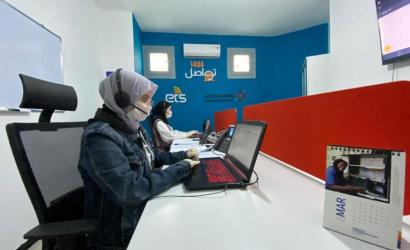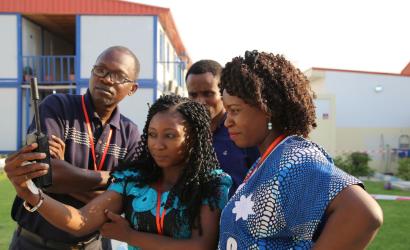Fiji
As a Pacific Island nation comprising over 300 islands, Fiji faces significant climate change challenges, including rising sea levels, coastal erosion, and increasingly severe tropical cyclones. While not as low-lying as atoll nations, many of Fiji’s coastal communities and infrastructure remain highly vulnerable to climate-related hazards. These threats pose serious risks to food security, freshwater availability, and the resilience of national infrastructure.
Fiji is already experiencing the impacts of climate change through more frequent and intense extreme weather events, such as cyclones, flooding, and prolonged droughts. These events disrupt agriculture, fisheries, and supply chains, particularly in remote and maritime communities, exacerbating food insecurity and economic vulnerability. In response, Fiji has developed a comprehensive policy framework to address climate change and disaster risk. The National Adaptation Plan and the Climate Change Act 2021 provide strategic direction for building resilience through nature-based solutions, climate-resilient infrastructure, and sustainable resource management. Fiji’s leadership in international climate diplomacy underscores its commitment to global cooperation and the urgent need for climate finance and technical support.
Telecommunications infrastructure in Fiji is advancing rapidly in 2025, with major investments in both submarine and terrestrial fibre networks. Telecom Fiji, in partnership with Google, is constructing a high-capacity terrestrial fibre optic link connecting the Vatuwaqa and Natadola cable landing stations, forming a critical part of the Pacific Connect initiative to enhance regional connectivity and resilience. In the north, the Savusavu to Labasa Fibre Project has been completed, creating a backbone network across Vanua Levu that significantly improves speed and reliability while reducing dependence on microwave links. These developments are part of Telecom Fiji’s five-year fibre investment strategy, aimed at future-proofing the nation’s digital infrastructure and bridging the digital divide by extending services to remote communities like Saivou Village. Fiji is also emerging as a regional connectivity hub, with the Bulikula and Tabua subsea cables landing at key points and integrated into the national network, supporting the country’s ambitions for digital transformation and economic growth.
The Emergency Telecommunications Cluster is focused on preparedness activities in Fiji and nearby Pacific Island countries under its Pacific Emergency Preparedness and Response project, lead by WFP.
ICT Profile
Department of Communications, Ministry of Policing and Communications, and Telecommunications Authority Fiji (TAF)
Telecommunications Authority of Fiji (TAF)
902,899
Source: World Bank 2021
Fiji is located south of the equator in an area known for the frequent occurrence of tropical cyclones with damaging winds, rains and storm surge. Fiji was affected by devastating cyclones multiple times in the last few decades. Fiji is situated in a relatively quiet seismic area but is surrounded by the Pacific “ring of fire,” which aligns with the boundaries of the tectonic plates. These boundaries are extremely active seismic zones capable of generating large earthquakes and, in some cases, major tsunamis traveling great distances. Local faults can also generate damaging earthquakes from time to time. Fiji is expected to incur, on average over the
long term, annual losses of US$85 million due to earthquakes and tropical cyclones. National efforts are being made for to better facilitate, coordinate and manage national disaster risk reduction and disaster management activities for disaster resilience. Efforts are being made to establish development programs aimed at building capacities at national, divisional, district and the local and community levels to ensure the safety and security of the Fiji population and its infrastructure.
Source: World Bank and Fiji NDMO
FJD (Fijian Dollar)
Source: ISO
2.80 (low)
Source: INFORM Risk 2021
679
.fj
Voltage: 240V, 50 Hz, Plug type: A, B
No
No
https://dlca.logcluster.org/display/public/DLCA/Fiji
8.4
Source: ITU ICTeye 2017
114.2
Source: ITU ICTeye 2017
1.4
Source: ITU ICTeye 2017
55.7
Source: ITU ICTeye 2017
60.2 (med-high)
Source: GSMA Intelligence 2019
96
Source: GSMA Intelligence 2019
This describes some of the regulations and rules related to emergency telecommunications in Fiji.
This Act seeks to make better provisions for the government and relevant agencies to perform functions and duties in relation to natural disaster management.
The Plan provides a clear vision for adaptation and identifies priorities to be addressed in partnership over the next five years, and beyond.
The Fiji Government decided to strengthen socio-economic growth through its re-farming process that will achieve the migration of analogue TV channel to Digital TV in the coming future, LTE, and other TV stations.
Tampere Convention - Fiji not a signatory
The Tampere Convention on the Provision of Telecommunication Resources for Disaster Mitigation and Relief Operations came into force 8 January 2005, following the ratification by 30 countries.
The Tampere Convention calls on States to facilitate the provision of prompt telecommunication assistance to mitigate the impact of a disaster, and covers both the installation and operation of reliable, flexible telecommunication services. Regulatory barriers that impede the use of telecommunication resources for disasters are waived. These barriers include the licensing requirements to use allocated frequencies, restrictions on the import of telecommunication equipment, as well as limitations on the movement of humanitarian teams.
According to Fiji’s national aviation authority, the Civil Aviation Authority of Fiji (CAAF), flying a drone is legal in Fiji provided requisite authorizations are taken.
